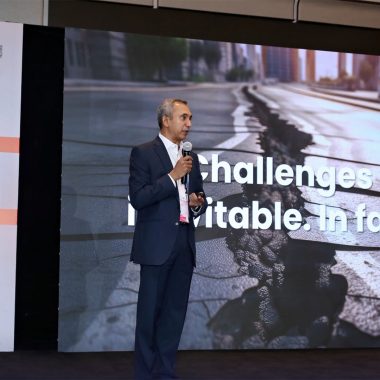M&A IT strategy isn’t just about integration; it determines whether you unlock EBITDA or lose millions. Yet, most executives overlook IT until it’s too late. The result? 70% of mergers fail, synergies stall, and profits disappear. However, Daniel J. Jacobs, with over 25 years of experience as an IT strategist, understands how to make IT investments align with business objectives to drive profitability. His expertise in assessing IT infrastructure, eliminating waste, and leveraging automation has made him a leader in the field.
Why IT Strategy Is the Hidden Lever of M&A Success
Jacobs emphasizes that most M&A failures don’t happen because of bad deals—they happen because IT is misaligned with business goals. “Before any acquisition, the key question isn’t ‘What technology do we need?’ but ‘How does IT unlock EBITDA and accelerate business objectives?'” he explains. Before making any IT decisions, Jacobs conducts a gap analysis to compare the current state of IT with the potential future. This approach ensures that IT investments contribute directly to the company’s overall objectives.
To turn IT into an EBITDA driver, M&A integration must follow the 3R IT Framework:
- Reduce Waste: Cut redundant software & eliminate hidden IT costs.
- Reallocate Capital: Shift savings into automation, AI, and cybersecurity.
- Reinforce Cybersecurity: Avoid regulatory scrutiny & compliance risks.
Executives assume faster IT integration means faster value—but the best strategy is often delaying changes until the highest-value synergies emerge. The fastest way to kill EBITDA? Standardizing too soon. Prioritize ‘high-value IT synergies’—because forcing full system replacement too early drains capital and reduces flexibility. IT leaders who speak tech, not business, struggle for buy-in.
“Executives don’t approve firewalls. They approve $500,000 in cyber risk mitigation to protect $10M in revenue,” Jacobs notes.
CIOs who frame IT investments in risk, cost, and EBITDA impact consistently secure budget approval. The IT leaders who fail? They talk specs, not business outcomes.
CIOs who win budget approval don’t talk “next-gen security”—they present a 20x ROI in risk avoidance. Jacobs asserts that they won’t get funded if IT investments aren’t framed in risk, cost, and EBITDA impact.
C-suite leaders don’t invest in IT. They invest in business outcomes. But here’s the hidden challenge—executives unconsciously overvalue IT systems they’ve had a hand in choosing. This is known as the “IKEA Effect.” M&A integrations fail when IT leaders push changes that decision-makers feel no ownership over. The solution? Involving stakeholders in key IT decisions early increases adoption and long-term success. IT professionals who fail to link tech requests to EBITDA, risk reduction, or revenue growth will always struggle for buy-in.
This mindset shift transforms IT’s strategic influence during acquisitions. Rather than requesting “next-generation firewalls with advanced threat protection,” Jacobs recommends presenting it with financial framing: “Our security assessment identified a $500,000 investment opportunity that mitigates a quantified $10 million risk exposure from potential data breaches, delivering a 20x return on investment through risk avoidance alone.”
Jacobs also notes, “In M&A scenarios, this translation becomes even more critical as executives evaluate dozens of competing priorities against tight timelines and integration deadlines. The IT leaders who consistently win executive support are those who present their recommendations through the lens of EBITDA impact, not technical specifications.”
Eliminating Waste to Boost EBITDA
Jacobs points out that the fastest way to boost EBITDA in M&A is to stop paying for what you don’t use. On average, 30% of software costs are wasted on duplicate licenses and unused services. Smart IT cost reduction isn’t just about saving money; it’s about reclaiming capital for growth. Addressing this low-hanging fruit immediately reduces costs and increases profitability without significant effort.
Case Study: Diamondback Energy’s $26 Billion Merger with Endeavor Energy Partners
Diamondback Energy’s $26B merger with Endeavor could have been an IT nightmare—redundant software, siloed systems, and cybersecurity risks. Instead, they turned IT into a competitive advantage:
- 20% IT cost reduction by eliminating software waste.
- 20% production efficiency gain through automation.
- $10M risk mitigation from proactive cybersecurity upgrades.
The lesson? IT isn’t just infrastructure—it’s EBITDA.
Following an approach aligned with Jacobs’ methodology, Diamondback’s team:
- Eliminated IT Waste: Early assessments revealed duplicative software licenses across the combined entity. By consolidating these, Diamondback reduced IT operating costs by an estimated 20%, validating Jacobs’ observation that 30% of software spend is often wasted.
- Created Operational Synergies: Integration of drilling data systems and automation tools boosted production efficiency by 20%, enabling fewer wells to maintain output—directly supporting Jacobs’ focus on leveraging automation.
- Prioritized Cybersecurity: With Endeavor’s history as a private operator, Diamondback conducted a comprehensive security audit to address a critical risk flag Jacobs advocates checking in every M&A deal.
By late 2024, Diamondback’s IT strategy unlocked a $50M EBITDA uplift—proving IT is a revenue driver, not a cost center.
For companies undergoing acquisitions, Jacobs also advises against ignoring technical debt. “Would you acquire a company with $50M in hidden liabilities? Then why acquire one with outdated IT that will cost millions to fix?” he says. Understanding the integration costs of legacy systems and evaluating their impact on operations is crucial before proceeding with an acquisition.
Identifying Red Flags and Green Flags in Acquisitions
When advising companies during an acquisition, Jacobs addresses cyber security as a top make-or-break factor. This starts with asking essential questions such as “Has the company been breached before? Have they lost sensitive data?” If the answer is yes, the deal comes with hidden liabilities, not the least of which are compliance penalties, reputational damage, and potential future breaches.
Beyond security, integration is key. “Most companies are 60% similar, and IT just needs to plug the remaining 40%, or if you’re lucky, it’s 80%-20%,” he explains. Understanding these synergies early reduces unexpected costs and accelerates post-merger success.
The Future of IT in M&A: AI, Automation, and Efficiency
AI is set to revolutionize IT strategy in M&A. “It’s going to eliminate manual data entry, accelerate analysis, and enhance decision-making at scale,” Jacobs predicts. However, he warns that data quality is the make-or-break factor. “If data hygiene isn’t high, AI delivers zero value,” he asserts.
By integrating automation with machine learning, IT shifts from a cost center to a revenue enabler. “At this stage, IT isn’t just supporting the business, it’s driving growth,” Jacobs states. This transformation allows companies to cut inefficiencies, reduce operational costs, and reallocate employees to higher-value strategic roles, boosting both productivity and innovation.
Keeping Up with Changes in the IT Landscape
In M&A, IT isn’t just infrastructure. It’s a profit lever. “A well-aligned IT strategy can make or break an acquisition,” says Jacobs. His expertise in risk mitigation, cost optimization, and seamless integration ensures that IT doesn’t just reduce waste; it unlocks EBITDA growth and competitive advantage. Your IT strategy could be quietly draining millions or unlocking untapped EBITDA.
How much IT waste is quietly draining your EBITDA? Most companies overspend by 30% without realizing it. Take Daniel Jacobs’ 2-minute IT Strategy Assessment now to uncover hidden savings and receive a high-level report on your current strategy.
For exclusive insights into IT Strategy and M&A, follow Daniel J. Jacobs on LinkedIn.








